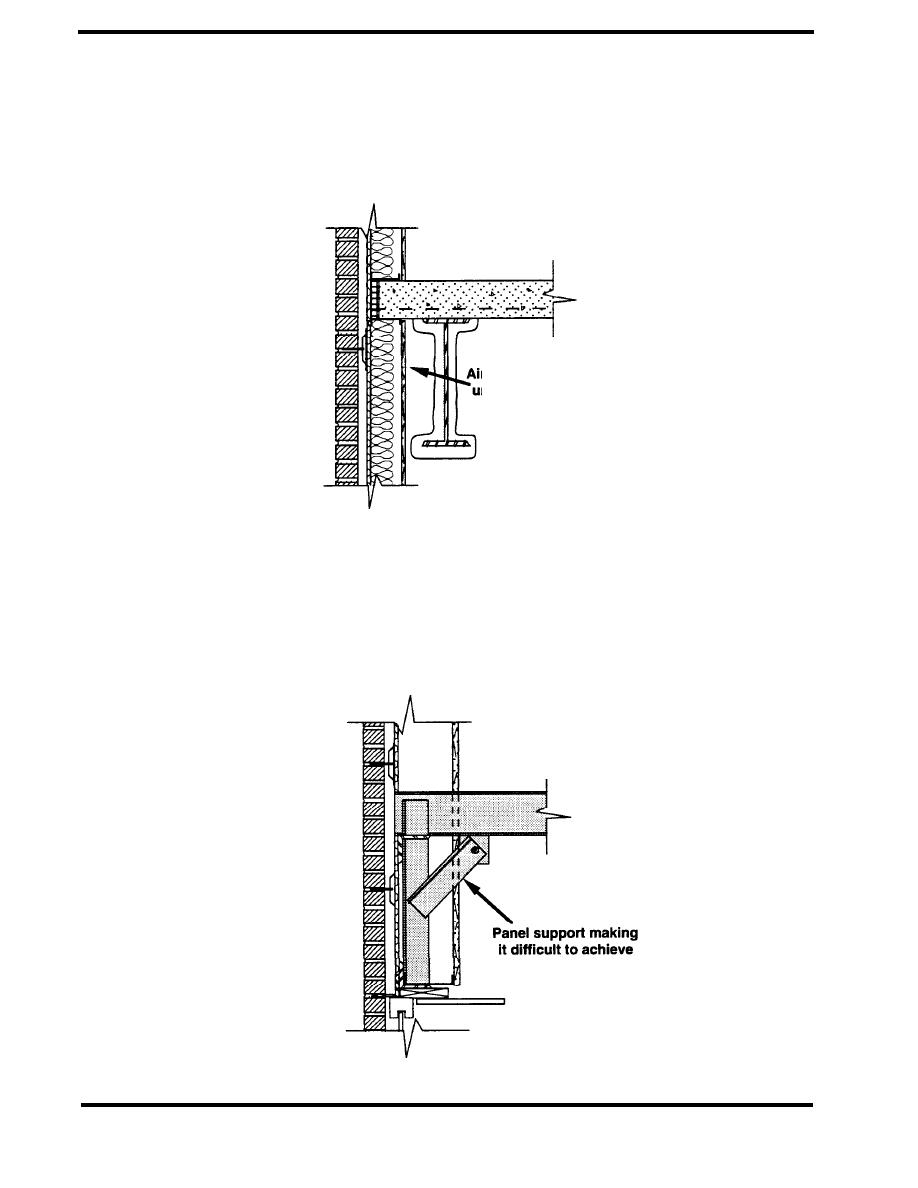
PRINCIPLES/DEFECTS
Two examples where incomplete finishing of the interior caused air leakage problems are described
by Kudder. The first, shown in Figure 2.3.2, was caused by a lack of finishing of the interior drywall
behind a spandrel beam. Because of the obstruction from the beam, it was impossible to install
drywall screws or to tape the drywall joints all the way up the height of the wall to the floor above.
An air path therefore existed from the building interior to the cavity behind the exterior facade.
UNACCEPTABLE
r leakage through
nfinished drywall
Unsealed Drywall due to inaccessibility (Kudder)
Figure 2.3.2
The second air leakage site described by Kudder is shown in Figure 2.3.3 where a diagonal brace
for a spandrel hanger penetrates the interior drywall and the insulation above a suspended ceiling.
An air leakage problem occurred because the brace penetration of the drywall was not sealed,
providing an air path from the interior to the cavity behind the facade. The penetration of the wall
insulation by the brace also constituted a thermal bridge.
UNACCEPTABLE
interior air seal
Figure 2.3.3 Diagonal Brace Supporting Spandrel (Kudder)
PAGE 2.3-6



 Previous Page
Previous Page
